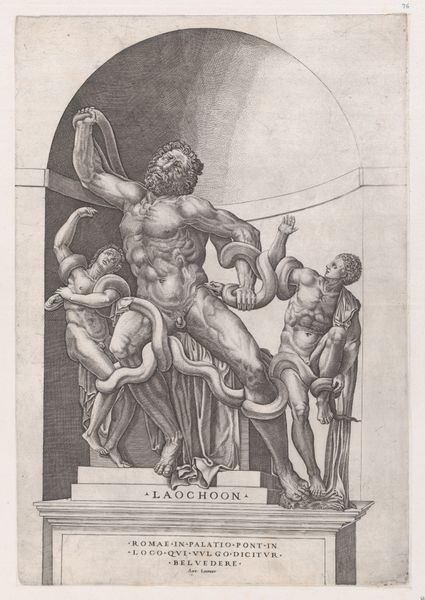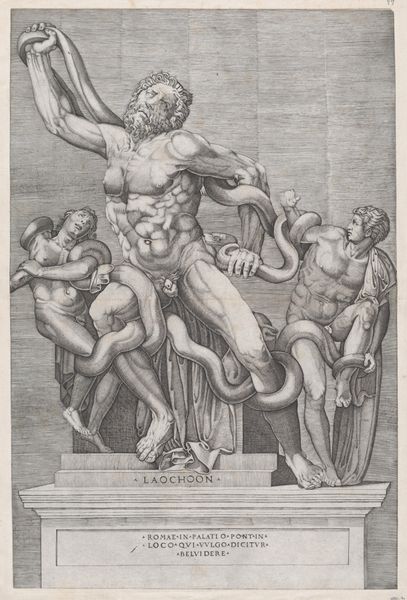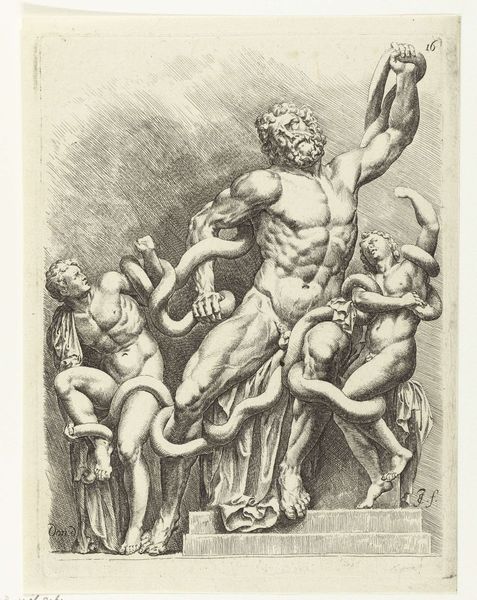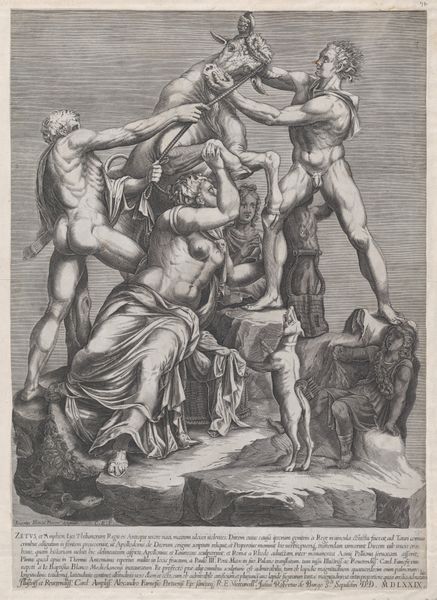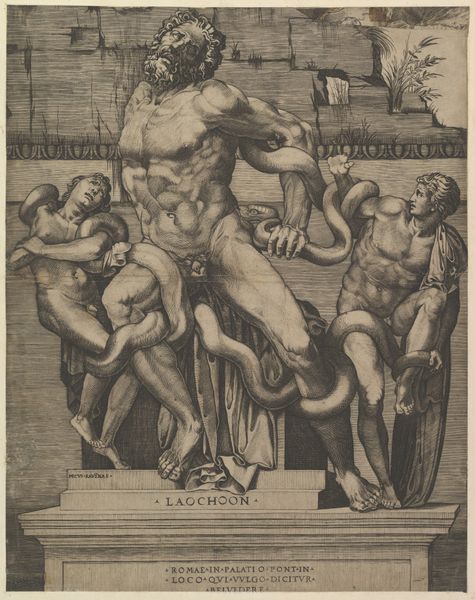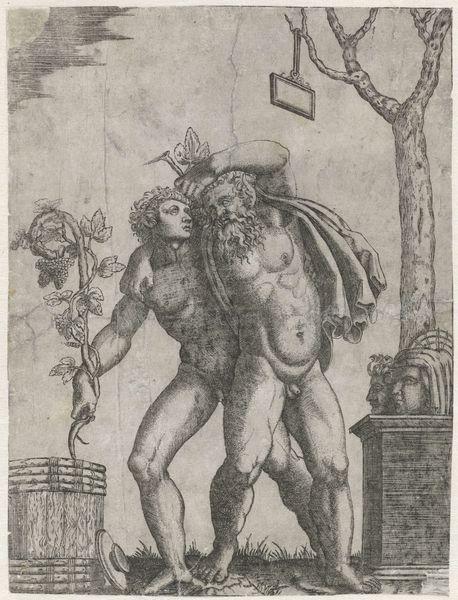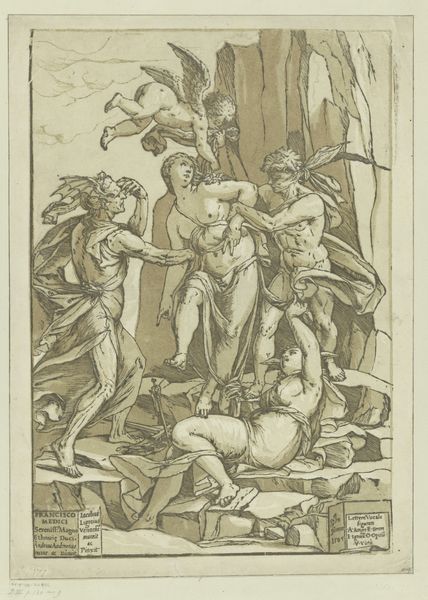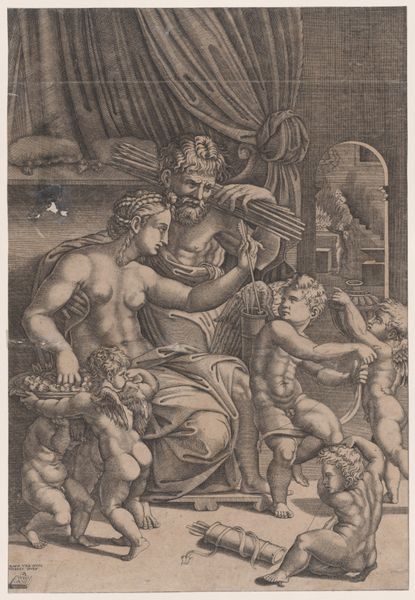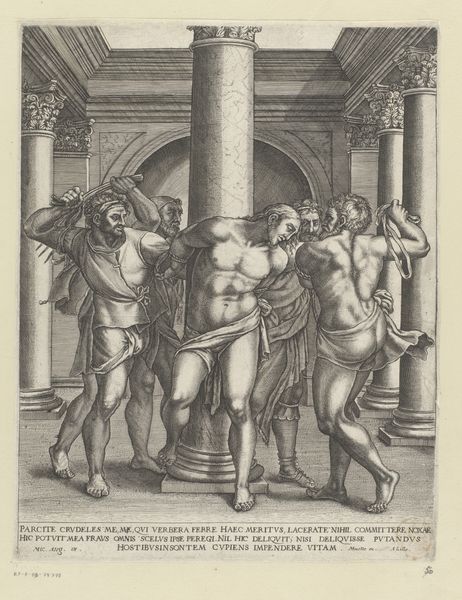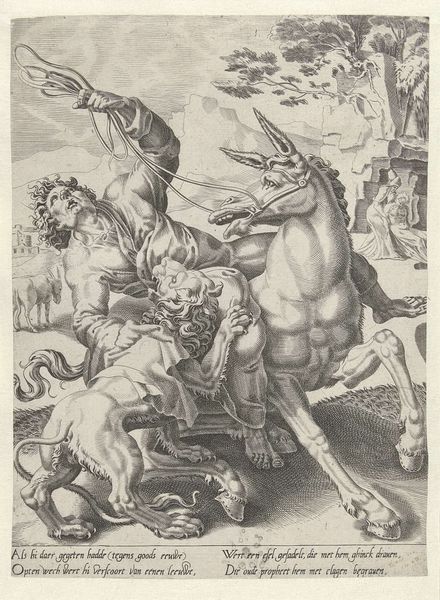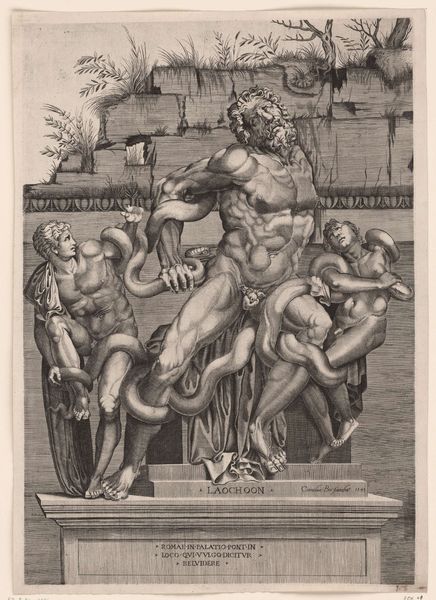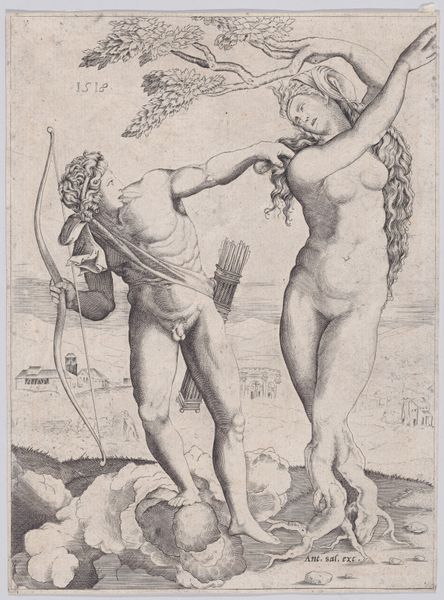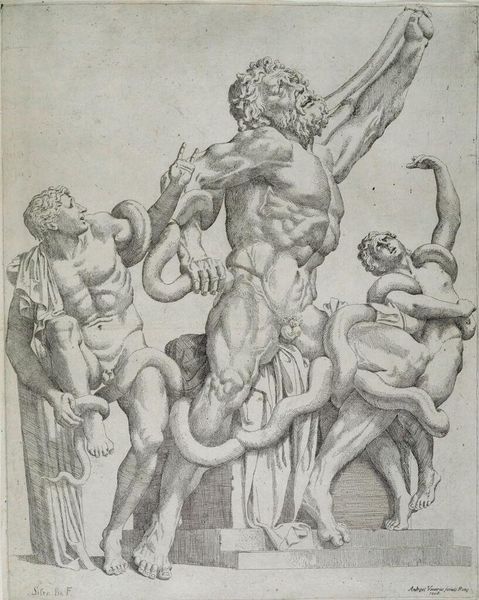
drawing, print, engraving
#
drawing
# print
#
greek-and-roman-art
#
mannerism
#
figuration
#
history-painting
#
nude
#
engraving
#
male-nude
Dimensions: sheet: 14 15/16 x 11 5/8 in. (38 x 29.6 cm) mount: 18 7/8 x 14 3/4 in. (48 x 37.4 cm)
Copyright: Public Domain
Curator: This engraving, dating back to 1561, offers a glimpse into the past. It’s Sisto Badalocchio's "Laocoon," part of the "Speculum Romanae Magnificentiae." Notice how the artist rendered this infamous scene from antiquity. Editor: Oh, wow. It's…intense. A writhing mass of bodies and snakes! The sheer struggle radiating from the figures leaps off the page. What’s so magnificent about the Roman spectacle, though? Torture? Curator: The title “Speculum Romanae Magnificentiae” refers to a collection of prints showcasing Rome’s ancient glories. It served as a visual catalogue of important antiquities—effectively disseminating classical ideals and aesthetics through printmaking. The Laocoon, unearthed in 1506, was a prime example of that rediscovery and its cultural impact. The snake is particularly significant, as is this moment of human agony as divine retribution. Editor: I see, like a Roman highlight reel! It really brings to mind how ancient trauma keeps looping through art history. I guess that says a lot about the narratives we perpetuate. Those Mannerist contortions and the snakes squeezing every last breath highlight human vulnerability. Curator: Exactly. Remember, the Laocoon represents not just physical suffering but also the failure of prophecy. His warnings to the Trojans went unheeded, leading to the city’s downfall. Consider the psychological weight carried by the serpent. Beyond obvious interpretations—betrayal, deceit, poison—snakes historically signify knowledge, rebirth, the cyclical nature of time. The death throes here are layered in symbolism. Editor: And the human form is almost painfully rendered! Badalocchio captures this sort of perfect, idealized body…being destroyed. Maybe that contrast is why it still resonates. We simultaneously desire and dread destruction, as the snakes take him and his sons. A potent allegory about foresight denied, destiny wrestled, a visceral expression of the cost of truth-telling. Curator: Precisely, the struggle is both physical and existential. It touches on universal anxieties of knowledge, mortality, and consequence. The enduring power of the Laocoon group, now rendered in this print, testifies to its status as a cornerstone of Western art and thought. Editor: It all comes down to recognizing how those snakes choke both the body and the soul. Food for thought. Curator: Indeed. A potent visual reminder.
Comments
No comments
Be the first to comment and join the conversation on the ultimate creative platform.
